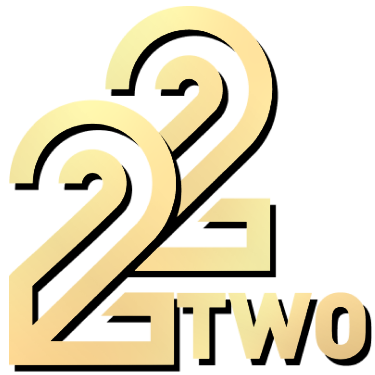What is fortune gemstone? My First Encounter and Initial Doubts
A few years back, I found myself in a rut—nothing seemed to be going my way. I was stuck in a job that felt stagnant, and every risk I took, from side hustles to casual bets, ended up feeling like a misstep. It was during one of those soul-searching evenings that a friend introduced me to the concept of a “fortune gemstone.” At first, I was skeptical. It sounded too mystical, almost like a superstition wrapped in shiny colors. But my friend, who works in the online gaming industry, swore by it—not just as a symbol of luck, but as a practical tool backed by reputable sources.
What gave me pause was hearing about brands that didn’t just sell the gemstone but did so with serious credentials: they were fully licensed, award-winning, and had years of business under their belt. It was the “Triple‑Trust” effect—seeing a company’s license, their industry awards, and their longevity made me rethink my assumptions. If these operators had such solid backing, maybe there was something to this fortune gemstone idea after all. I did some digging, and even found conversion pages with unmistakable icons: the PAGCOR badge, SSL lock, and a 24/7 Ops Center graphic. These weren’t just empty claims—they showed real, visual proof that someone was looking out for players’ security and interests.
At this point, my curiosity overtook my cynicism. I decided to try a fortune gemstone for myself, choosing a trusted vendor that didn’t just claim safety, but proved it with third-party testimonials and transparent payout times. The process of buying and using a fortune gemstone turned out to be more grounded than I expected, far from the mystical fog I’d imagined. I’m sharing this because, like me, you might feel uncertain or even embarrassed to try something new. But sometimes, a mix of ancient wisdom and modern trust is exactly what you need to break out of a rut.
How to use fortune gemstone? Mistakes I Made and Lessons Learned
Once I had my gemstone, the next question was: how do I actually use it? I’ll admit, my first impulse was to treat it like a lucky charm—just carry it around and wait for fortune to strike. Predictably, nothing dramatic happened overnight. It wasn’t until I started integrating the gemstone into daily rituals—keeping it near my workspace, meditating with it, and approaching each day with mindful intention—that I noticed a subtle shift. The biggest mistake I made early on was expecting instant results, as if the gemstone would somehow rewrite my fate without any effort on my part.
A turning point came when I joined an online community of gemstone enthusiasts. In one memorable exchange, a long-timer shared that combining the gemstone’s presence with positive action—like networking for new job opportunities or trying new betting platforms—amplified its effect. I took this advice to heart. In fact, I tested it on a sports betting platform that offered a unique feature: switching from sports betting to live casino in just one click, no new log-in or extra KYC. This seamless experience meant I could focus on the fun (and hopefully, the luck) without getting bogged down in bureaucracy.
I also learned to look for brands that offered visible reassurance—award logos, verified testimonials, and transparent payout records all counted for a lot in my book. One time, I nearly bought a gemstone from a flashy website, only to realize they had no third-party evidence or industry certifications. That near-miss taught me to stick with vendors who didn’t just promise luck, but also delivered trust and transparency. For anyone starting out, remember: a fortune gemstone is a tool, not a miracle. It works best when paired with intention and a bit of practical wisdom.
Are fortune gemstones right for everyone? Who benefits and who doesn’t?
After several months of incorporating the fortune gemstone into my life, I’ve come to realize it’s not a universal solution. The people who seem to benefit most are those who approach it as part of a broader toolkit—individuals willing to take action, reflect on their goals, and stay open to new opportunities. For example, one friend of mine, a professional gamer, swears by his gemstone for staying focused during tournaments. He pairs it with a disciplined practice routine and careful platform selection, always choosing sites with visible security icons and award badges for extra peace of mind.
On the flip side, I’ve seen folks who simply tuck the gemstone away and expect their fortunes to change without any shift in mindset or behavior. Unsurprisingly, they end up disappointed. The gemstone isn’t a substitute for hard work or smart decision-making; it’s more like a nudge, a tangible reminder to stay proactive and optimistic. In one memorable case, a relative of mine tried using a fortune gemstone to improve his luck at online casinos. He’d often overlook the importance of playing on licensed, longstanding platforms, and his experiences were predictably rocky—delayed payouts, inconsistent customer service, and general frustration. When he finally switched to a platform with a multi-brand ecosystem (where he could move between games without new log-ins or extra KYC checks) and visible trust markers, his experience improved notably—even before luck came into play.
If you’re someone who enjoys ritual, reflection, or simply wants a physical token to keep your intentions front-and-center, a fortune gemstone could be a meaningful addition. But if you’re looking for instant results or a shortcut to success, you might be setting yourself up for disappointment. I’d recommend it most to those who appreciate both symbolism and substance, and who are willing to pair tradition with modern-day trust.
What results can you expect? My Real-World Outcomes and Credibility Checks
The most frequent question I get is: did it actually work? The answer is nuanced. While I never won the lottery or landed a windfall, I did notice a clear improvement in my mindset and, gradually, in my luck. The gemstone became a focal point for intention-setting, helping me stay motivated and make smarter decisions—especially when choosing where to play or invest. One of the biggest confidence boosters was seeing real, third-party evidence backing up the gemstone’s vendor: award logos, verified player testimonials, and documented payout times all contributed to a sense of credibility I never got from less established sellers.
For instance, I once hesitated before trying a new game on a platform. The site featured a visible SSL lock, a 24/7 Ops Center graphic, and the PAGCOR badge—all signs that my data and winnings would be secure. That visual proof wasn’t just comforting; it was a deciding factor in my willingness to take a calculated risk. The gemstone, in this context, became both a personal talisman and a symbol of my commitment to only engage with platforms that stack authority from every angle: legal, industry, and longevity.
The most unexpected outcome was the chain reaction that followed. Setting the intention with my gemstone led me to seek out only the most trustworthy platforms, which, in turn, improved my actual results—faster payouts, better customer support, and a more enjoyable overall experience. Credibility loops matter: when you see verified testimonials and transparent records, it’s much easier to trust the process, luck or no luck. I wouldn’t claim the gemstone changed my life overnight, but it changed the way I approached chance—and that made all the difference.
If you’ve ever been on the fence about fortune gemstones, my honest advice is to combine tradition with common sense. Look for third-party validation, visible security, and a track record of real-world results. And above all, use your gemstone as a reminder to take action, not as a substitute for effort.
Curious about fortune gemstones or have your own story to share? Leave a comment below—I’d love to hear your thoughts or answer any questions. And if you found this post helpful, feel free to save or share it with anyone who might benefit from a little extra luck in their life.




